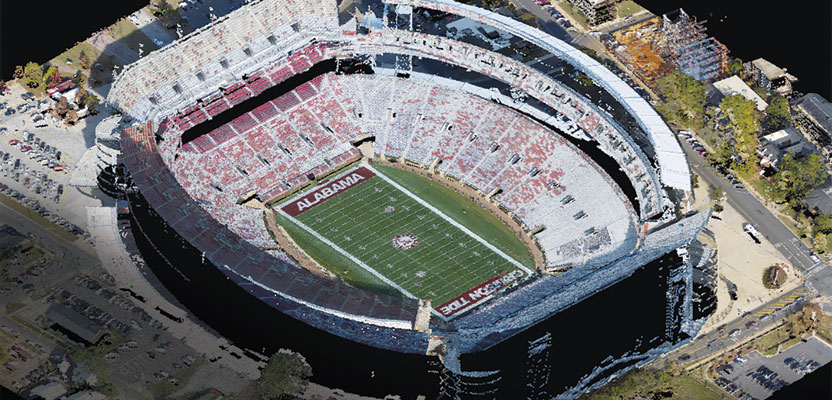New Sensor Design, Fast Change for Processing Software, Adaptive Hiring
As business owners in the geospatial profession, we are tasked with the difficult challenge of helping our companies understand changes in technology, client expectations, and data trends and then leading the investment, adaptation, and business processes that put us on a path to success in a changing environment while satisfying banker/investor expectations. The rate of change for geospatial technology, specifically aerial data sensors and the software necessary to process that data, seems to be increasing exponentially each year.
History is full of examples of companies across many professions that failed to adapt to an evolving environment. Most changes in a business environment are led by changes in technology, which is especially true for the geospatial profession. Even in the past two to three years, technologies have vastly changed. The emergence of digital camera technology, the evolution from analytical to digital photogrammetric tools, the large-scale adoption of lidar are all among many technology trends now commonplace for companies.
In addition, in recent years we’ve witnessed the rise and fall of several organizations, companies that were full of good professionals but got too comfortable with their technology and practices. Failure to accept technological evolution or lacking the financial strength to continually reinvest in technology is a sure-fire recipe for imminent failure as a business.
We would like a timeout simply to digest all of the emerging trends with aerial sensor platforms. In the past couple of years at my geospatial company, we’ve invested millions in capital expenditures that have included new lidar systems, a new camera system, and countless seats of processing software. In a lot of private industries, significant “re-tooling” expenditures usually set your business up for performance enhancements, growth, and higher profitability. In our profession, it simply means we are closer to the next upgrade than some of our peers.
As the profession expands and we are capable of reaching wider audiences, we have to find new ways to serve them. Many projects now use technologies that were once reserved for the three-letter defense agencies. Thermal IR, hyperspectral, and oblique camera systems are becoming common requests from clients. Multi-sensor data fusion is becoming a standard as it combines the output from these systems with technologies like lidar. Much like the 8-track, VHS, DVD, flat screen TV’s, etc., as the technology matures, the price of providing services will decrease, making these technologies more commonplace in the market, which is why it is becoming more affordable for non-DoD agencies and private organizations.
As part of our role to understand changes in technology, it is imperative to hold frequent meetings with the sensor manufacturers that cater to the private airborne geospatial firms. Currently, camera manufacturers are producing third- and fourth-generation digital mapping-grade camera systems. Lidar systems are going from 500,000 pules per second to over 1,000,000. These trends will allow companies to fly higher and faster and to develop data with the precision and accuracy clients have come to depend upon for their business needs. It is both scary and exciting at the same time.
Not only are we dealing with new sensor designs, we are also discovering a rate of change in the processing software that is unprecedented. We are doing things with lidar and imagery data that I didn’t believe was possible just a few years ago. Technologies and algorithms that were designed for other industries such as gaming are finding their way into the mainstream airborne data processing workflows. The software companies continue pushing the envelope, and the technological advancements are creating alternative ways to create solutions, compress schedules, reduce costs, and maintain quality.
With all of these changes, we’ve had to adapt our hiring as well. It’s no longer the golden days when “everyone has the same technology and processes” and you gained a competitive advantage by hiring experienced practitioners at bargain prices. Now business owners are constantly looking for employees who embody an entrepreneur’s spirit, who are driven not just by salary but also by mastering technology. Companies are searching for employees who focus large portions of their time conducting research and development, working hand-in-hand with sensor manufacturers and software providers to keep up with the many changes I’ve discussed.
UAS, big data, and many other buzz words that fill our daily thoughts will force our entire profession to undergo even more change over the coming year(s). To continue our profession’s trajectory of growth and success, we will have to continue to reinvest in our sensors, software, people, and new sensors/tools such as UAS.
To keep up with this ever-changing, growing profession, it looks as if we won’t get a timeout after all. Instead, we must be reinvigorated by the challenges and continue to look for new ways to thrive in an ever-evolving profession.

